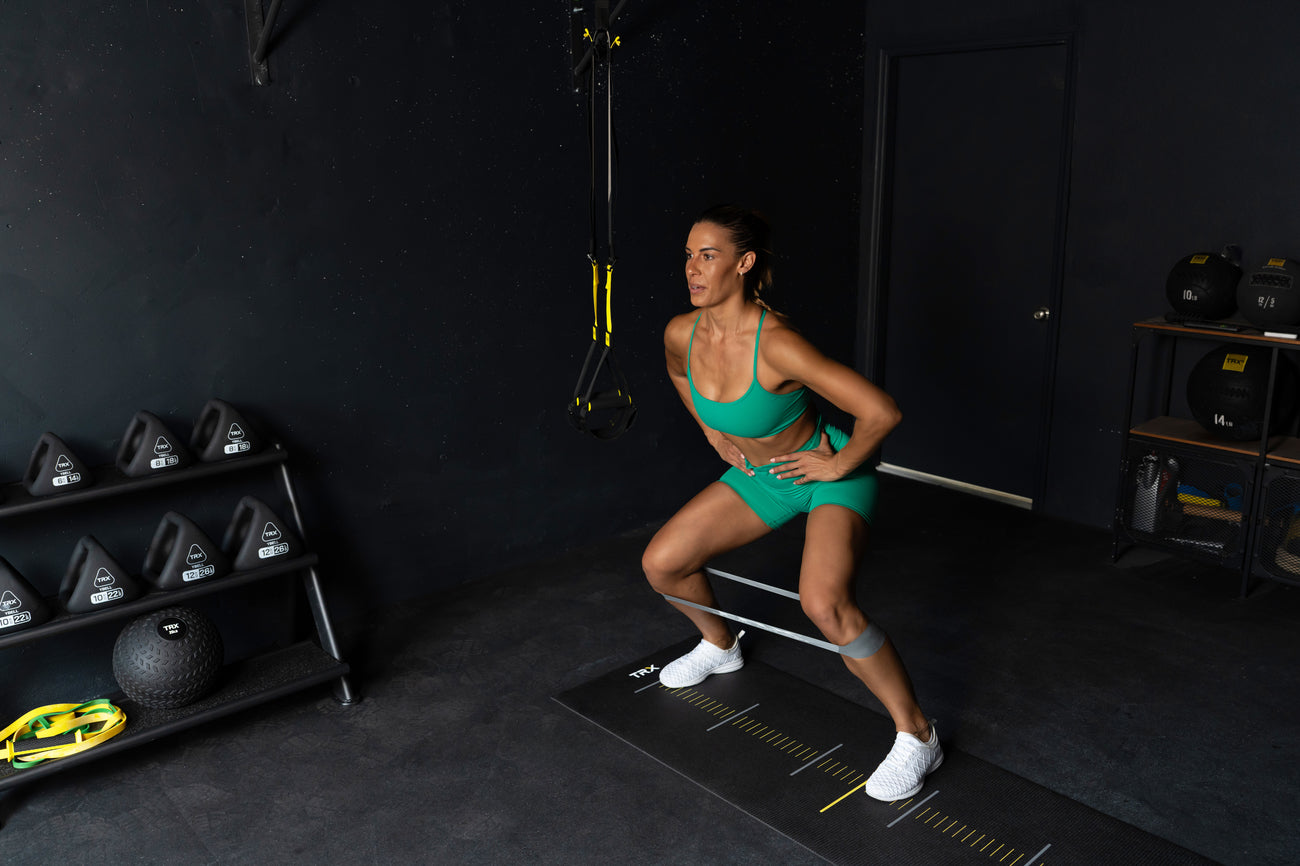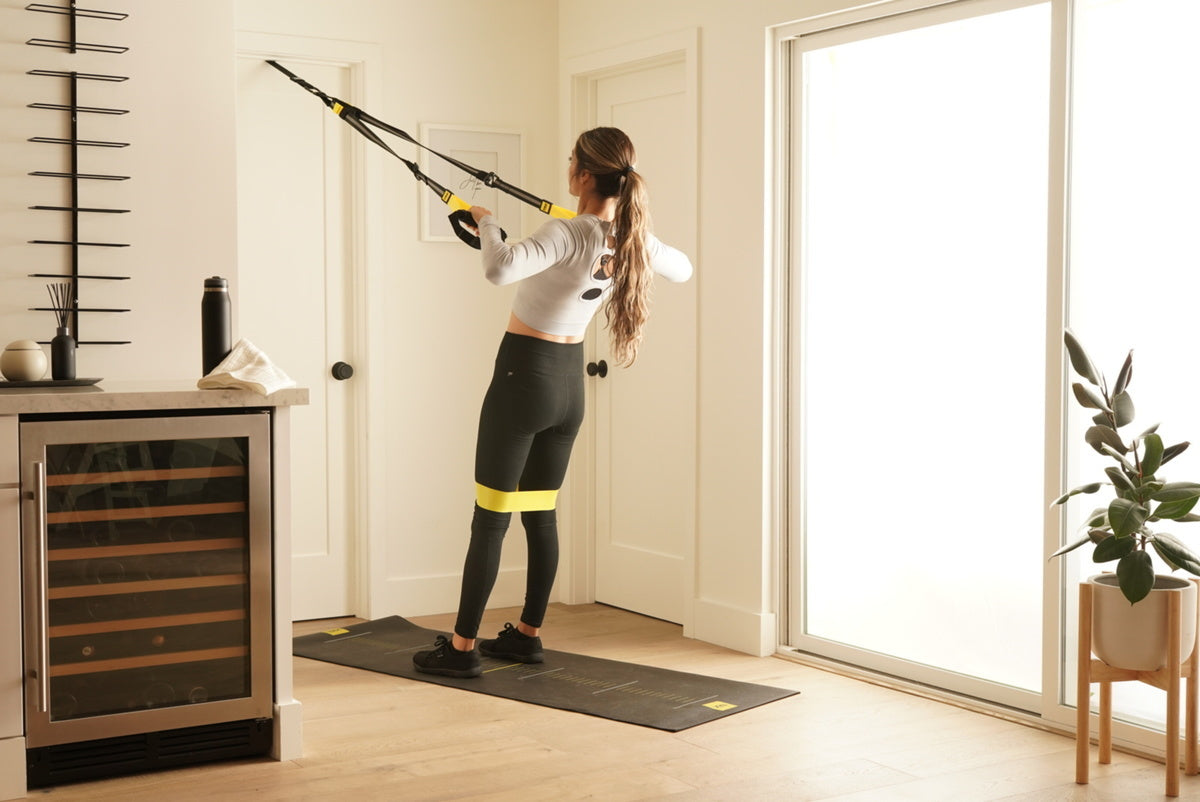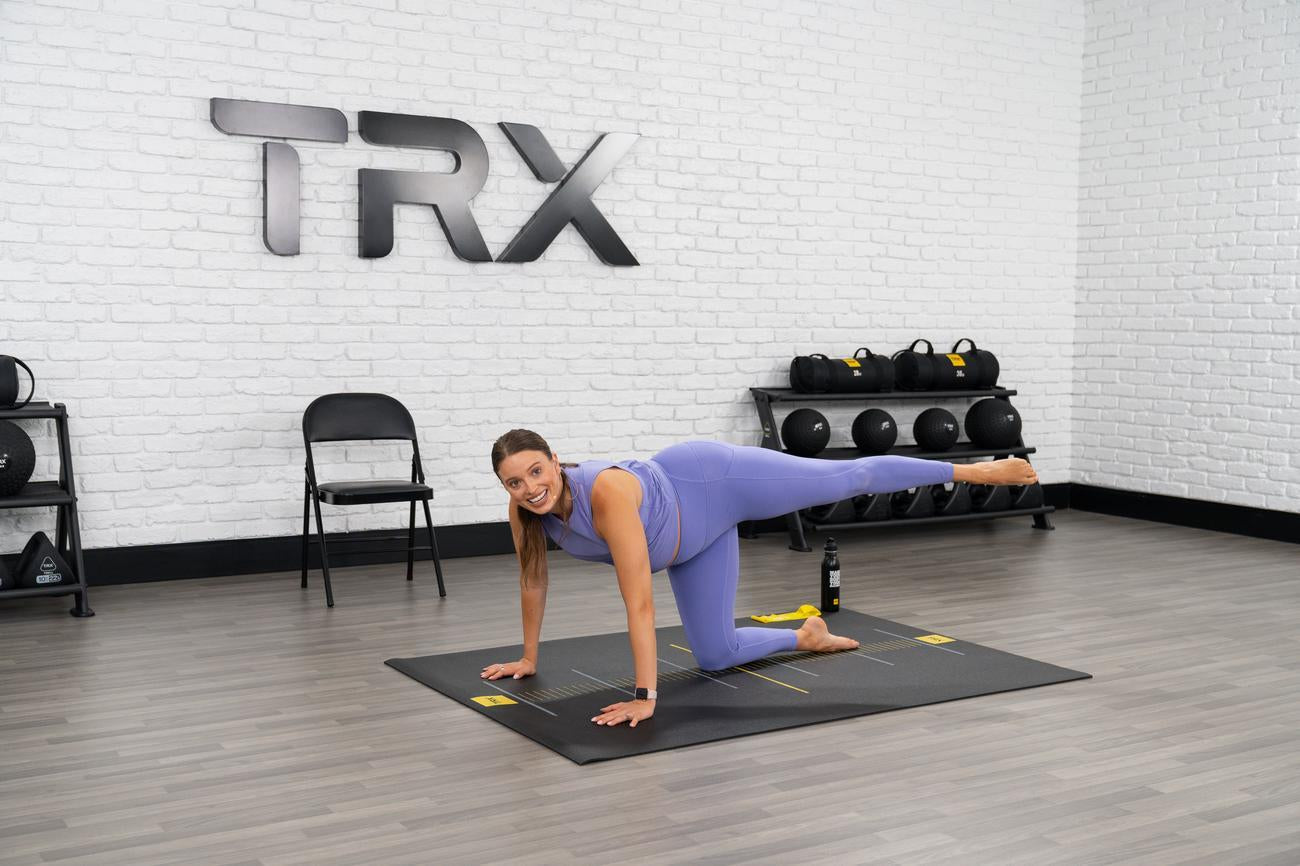Resistance band leg exercises are a fantastic way to strengthen your lower body, improve mobility, and enhance endurance without the need for heavy weights or machines. In this guide, we’ll explore the benefits of these exercises, how they target different muscles, and the best moves to incorporate into your routine. Resistance bands offer a versatile and effective workout, whether you're a beginner or an experienced athlete. Ready to level up your leg day? Let’s get started!
What is a Resistance Band Leg Exercise?
A leg exercise using a resistance band involves any lower-body movement that utilizes a resistance band to generate tension and engage the muscles effectively. These exercises focus on the legs, glutes, and hips by incorporating controlled resistance, enhancing strength, stability, and endurance. Resistance bands engage various muscle groups, improve mobility, and offer an effective workout without requiring heavy weights or machines.
Benefits of Resistance Band Leg Exercises
Why not just use weights to train your legs? We get this question all the time. The answer? There are a ton of benefits for your legs when it comes to resistance training.
Increases Strength & Endurance
Resistance bands keep the tension up during every move, making muscles work harder and using supporting muscles you might not use when lifting weights the old-fashioned way. Gradually challenging your muscles with different amounts of resistance helps improve muscular endurance, which means you can do exercises for more extended periods without getting tired. It also boosts your overall strength.
Enhances Mobility & Flexibility
Working out with resistance bands can help you move around better by letting your joints move in all directions and stretching and strengthening your muscles. The managed resistance enables you to move slowly and safely, which makes it great for getting more flexible without the risk of overstretching. Regular use can help loosen up tight muscles, improve posture, and make you less stiff, which are good for sports performance and regular movement.
Targets Stabilizing Muscles
Smaller supporting muscles that aren't used much in regular workouts are worked out by resistance bands. By controlling moves against the band's resistance, these muscles help support major joints, improve coordination, and make you more balanced overall. By strengthening these stabilizers, you lower your risk of injury, improve your posture, and boost your everyday activities and athletic performance.
Customizable Resistance Levels
Resistance bands are good for people of all fitness levels, from those who are just starting out to those who are very good at it. You can easily change how hard you're working out by switching to a band with more or less force or by changing how you hold and stand. This flexibility lets you gradually add more weight, which helps you get stronger over time and makes sure that your workouts stay tough and useful even as your fitness level rises.
Convenient & Affordable
Resistance bands are affordable and invaluable exercise equipment that can work out your whole lower body without big, expensive gym equipment. They're small, light, and easy to carry, making them perfect for workouts at home, on the go, or outside. Their low cost and versatility mean anyone can add strength training to their practice without spending much money. This makes fitness accessible anytime, anywhere.
Related: TRX Suspension Training vs. Resistance Band Training
Best Resistance Band Leg Exercises
1. Glute Bridge Pulses
Glute Bridge Pulses are a great way to strengthen your glutes while improving endurance. These short movements keep constant tension on the muscles, making them work harder without rest. This exercise not only builds strength but also enhances muscle activation, helping to sculpt and tone the glutes more effectively.
Here’s How to do the Glute Bridge Pulses:
-
Lie on your back with knees bent, feet flat on the floor hip-width apart, and a resistance band around your thighs just above the knees.
-
Place your arms at your sides with palms facing down for support.
-
Press through your heels to raise your hips toward the ceiling, forming a straight line from shoulders to knees.
-
Squeeze your glutes and tighten your core to maintain stability.
-
Perform small, controlled pulses by slightly lowering and lifting your hips without letting them touch the ground.
-
Keep slight outward pressure on the band by pressing your knees apart.
-
Continue pulsing for 15-20 reps or the desired time, keeping constant muscle engagement.
-
Slowly lower your hips back to the ground with control to finish the set.
2. Glute Bridge With Alternating Leg Raise
Glute Bridge With Alternating Leg Raise takes the standard glute bridge up a notch by adding a leg lift. As you hold the bridge position, you alternate raising one leg at a time, forcing your glutes, hamstrings, and core to stabilize your body. This variation increases the challenge by engaging more muscle groups while improving balance and coordination.
Here’s How to do the Glute Bridge With Alternating Leg Raise:
-
Lie on your back with knees bent, feet flat on the floor hip-width apart, and a resistance band around your thighs just above the knees.
-
Keep your arms at your sides with palms facing down for stability.
-
Press through your heels to raise your hips, creating a straight line from shoulders to knees.
-
Tighten your core and squeeze your glutes to maintain balance.
-
Extend one leg straight while keeping your hips level and maintaining tension in the band.
-
Pause for a second at the top to engage muscles fully.
-
Bring the leg back down, keeping hips elevated, and repeat with the other leg.
-
Alternate legs for 10-15 reps per side while maintaining control.
-
Slowly lower your hips to the ground with control to complete the set.
3. Resistance Band Squats
Resistance band squats add extra tension to the movement, engaging more muscle fibers and improving strength, stability, and control. The bands increase resistance as you rise, making the top portion of the squat more challenging while reinforcing proper form. This exercise is great for building lower-body strength, activating the glutes, and enhancing mobility.
Here’s How to do the Resistance Band Squats:
-
Stand with feet shoulder-width apart and place a resistance band around your thighs just above your knees or under your feet while holding the handles (if using a loop or tube band).
-
Keep your chest up, shoulders back, and core tight for stability.
-
Push your hips back and bend your knees, lowering yourself as if sitting in a chair.
-
Press your knees slightly outward to keep resistance on the band and activate the glutes.
-
Lower until your thighs are at least parallel to the ground, keeping your weight in your heels.
-
Press through your heels to return to a standing position, squeezing your glutes at the top.
-
Perform 10-15 reps, ensuring control and proper form throughout.
4. Side-Lying Leg Lifts
Side-lying leg Lifts with a resistance band target the outer thighs and glutes, specifically the hip abductors. Lying on your side, the band adds resistance as you lift your leg, making the movement more challenging and ensuring greater muscle engagement. This exercise is great for improving hip strength, stability, and overall lower body tone.
Here’s How to do the Side-Lying Leg Lifts:
-
Lie on your side with your legs stacked and a resistance band around your thighs just above the knees.
-
Rest your head on your arm or prop yourself up on your forearm for stability.
-
Tighten your core to keep your body stable and prevent rocking.
-
Raise your top leg upward against the band’s resistance while keeping it straight.
-
Pause at the top for a second to maximize muscle engagement.
-
Slowly bring your leg back down without letting it fully rest.
-
Perform 10-15 reps per side, maintaining steady movement and resistance.
-
Turn over and repeat on the other leg.
5. Runner’s Extensions
Runner's Extensions are a strong workout that strengthens the core, glutes, and hamstrings by making you move like you're running. With the help of a resistance band, this move works on balance and steadiness on one leg, which helps with coordination and control. It's especially good for runners and sports because it makes the hips stronger and more flexible, which lowers the risk of injury and improves the way you move.
Here’s How to do the Runner’s Extensions:
-
Stand with a resistance band looped around both ankles or secure one end under your foot and hold the other with your hands.
-
Keep your core tight and stand tall with a slight bend in the standing leg.
-
Slowly extend one leg backward while keeping the knee slightly bent, mimicking a running motion.
-
Keep control as you extend and avoid snapping the band back.
-
Pause at the top to engage the glutes and hamstrings.
-
Bring your leg back to the starting position with control.
-
Perform 10-15 reps per side, then switch legs.
6. Clamshells
Clamshells are a simple but very effective way to work out the gluteus medius, the muscle that keeps the hip stable and allows for side-to-side movement. By wrapping a resistance band around the legs, this exercise increases the challenge, making the outer hips and glutes work even harder. It’s a great way to build lower body strength while also helping to prevent knee and hip pain. Often used in rehab and injury prevention routines, clamshells are also an excellent addition to any workout focused on strengthening the glutes and improving overall stability.
Here’s How to do the Clamshells:
-
Lie on your side with knees bent at a 90-degree angle and a resistance band around your thighs just above the knees.
-
Rest your head on your arm or prop yourself up on your forearm for stability.
-
Tighten your core to keep your hips stable and prevent rolling backward.
-
Keeping your feet together, lift your top knee upward against the band’s resistance.
-
Pause at the top for a second to maximize muscle engagement.
-
Slowly bring your knee back down without letting it fully rest.
-
Perform 10-15 reps per side, maintaining steady movement and resistance.
-
Turn over and repeat on the other leg.
7. Standing Glute Kickbacks
As you stretch one leg backward with a resistance band, you can do Standing Glute Kickbacks. This works the glutes and hamstrings separately. This move strengthens the back muscles and makes you more stable and balanced at the same time. This exercise is great for working out the hips without putting stress on the knees. It's a great choice for people who want to tone and shape their lower body in a safe, low-impact way.
Here’s How to do the Standing Glute Kickbacks:
-
Stand tall with a resistance band looped around your ankles or just above your knees. Hold onto a wall or sturdy surface for balance if needed.
-
Keep your core tight and maintain a slight bend in your standing leg.
-
Extend one leg straight back against the band’s resistance, keeping your foot flexed and glutes engaged.
-
Pause at the top for a second to maximize muscle activation.
-
Slowly bring your leg back to the starting position without letting the band go slack.
-
Perform 10-15 reps per leg, then switch sides.
8. Tabletop Glute Kickbacks
Tabletop Glute Kickbacks target the glutes and legs while also strengthening the back and core for stability. As part of resistance band exercises to build a stronger back, this move increases muscle engagement, improving strength, balance, and control.
Here’s How to do the Tabletop Glute Kickbacks:
-
Get on all fours in a tabletop position with a resistance band looped around your thighs just above the knees or around your ankles.
-
Keep your back flat, core tight, and wrists aligned under your shoulders.
-
Extend one leg straight back, pushing against the band’s resistance while keeping your foot flexed.
-
Pause at the top for a second to maximize glute activation.
-
Slowly bring your knee back to the starting position without letting it touch the ground.
-
Perform 10-15 reps per leg while maintaining tension.
-
Repeat on the other leg.
9. Lateral Band Walk
The Lateral Band Walk is a simple exercise that works the glutes, hips, and legs. It also makes you more stable and in control. When you step from side to side with a resistance band around your legs, you work out the smaller muscles in your hips and outer thighs. These muscles are important for keeping your knees straight and avoiding damage. It's great for athletes, runners, and anyone else who wants to improve their lower body and make it easier to move around.
Here’s How to do the Lateral Band Walk:
-
Stand with feet hip-width apart and place a resistance band around your thighs just above the knees or around your ankles.
-
Slightly bend your knees and keep your core tight, maintaining a slight squat position.
-
Take a step to the right with your right foot, keeping tension in the band.
-
Step your left foot in the same direction without letting the band go slack.
-
Keep your knees slightly pushed outward to activate the glutes.
-
Take 10-15 steps in one direction, then reverse and step back to the starting position.
10. Diagonal Band Walk
A Diagonal Band Walk is like a lateral band walk but moves in both forward and backward directions. This practice works out many muscle groups, like the glutes, quads, and hip stabilizers, while improving coordination. If you're looking for an effective body workout at home, this exercise is an excellent addition to your routine.
Here’s How to do the Diagonal Band Walk:
-
Stand with feet hip-width apart and place a resistance band around your thighs just above the knees or around your ankles.
-
Maintain a slight squat position with your chest up and core tight.
-
Take a step forward and diagonally to the right, keeping tension in the band.
-
Bring your left foot in the same direction without letting the band go slack.
-
Continue stepping diagonally forward for 10-15 steps.
-
Step diagonally backward to return to the starting position.
-
Keep knees slightly pushed outward and avoid dragging your feet.
Related: The 10 Best Resistance Band Chest Exercises + Sample Workout
How to Use Resistance Bands in Your Daily Activities
Resistance bands offer a simple method to enhance strength, increase flexibility, and elevate mobility without bulky equipment. These exercises are excellent for joining a gym or working out at home, including squats, lunges, and glute bridges, to enhance the strength of your lower body. Engaging in seated leg extensions or lateral band walks can improve circulation and alleviate stiffness if you remain seated for extended durations.
Bands are excellent for stretching—utilize them to enhance hamstring or shoulder stretches before or after workouts. Simple movements such as glute kickbacks while brushing teeth or performing side steps during chores can help maintain muscle engagement throughout the day. Compact and easy to carry, resistance bands allow for convenient activity at home, in the office, or while traveling.
Conclusion
Leg exercises with resistance bands offer an efficient, convenient, and adaptable method to build strength in your lower body, boost mobility, and increase endurance without bulky equipment. Whether targeting your glutes, quads, hamstrings, or stabilizing muscles, these exercises provide adjustable resistance to suit every fitness level. Suppose you're looking to mix things up.



